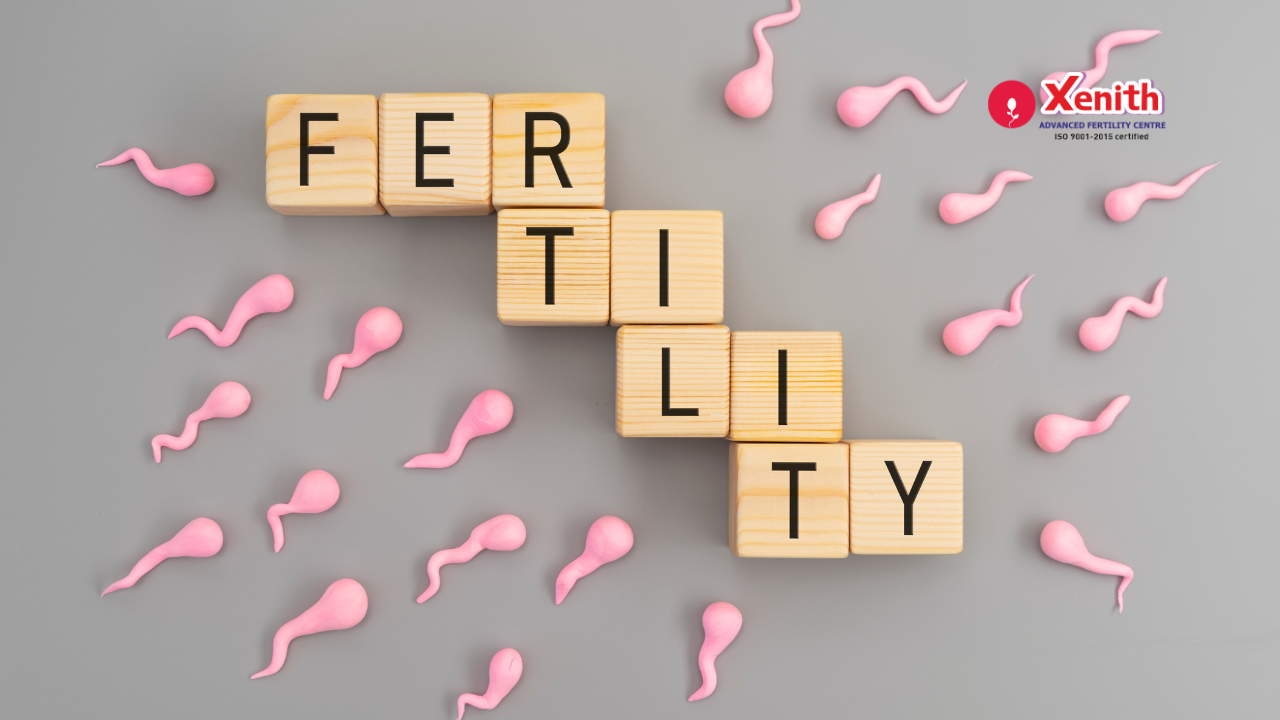When trying to conceive, its useful to know when is your peak time for fertility, how fertile you actually are, what could affect fertility and is there anything you can do to become more fertile. One is considered fertile if one can conceive within 1 year of having regular unprotected sex. Whether your fertility is low or high, there are various things one can do to aid in this journey.
The menstrual cycle explained

Free Thursday Consultation
The main purpose of the menstrual cycle is to prepare the body for pregnancy in case it happens. The average length of the menstrual cycle is considered to be 28 days although it can vary anywhere from 21 to 35 days for different women. The menstrual cycle begins and ends with the first day of menstruation and is divided by ovulation into the follicular phase, which is the time before ovulation, and luteal phase, which is the time after ovulation. Ovulation is considered to be the time when the mature egg is released from the ovary into the fallopian tube and, on average, it occurs around day 14. So, ovulation day is considered to be the time of highest fertility. The fertile window during which there is a high probability of conception from unprotected sex, is defined as the day of ovulation (the egg can survive for 12-24 hours) and the 5 days preceding it(the sperm can survive about 5 days). So ideally, the sperm should be in place as soon as the egg is released in order to fertilize the egg. If the egg is fertilized by the sperm, it will travel to the uterus. The uterine lining thickens in order to prepare for possible implantation and the texture of the fluid in the cervix can change making it easier for the sperm to swim through. If, however, the egg doesn’t get fertilized, the uterus sheds its lining along with the egg and the period begins again, starting another cycle. So the level of fertility can go from low to high depending on which phase of the cycle you are in, with the highest during ovulation and the lowest during menstruation. The characteristics of the menstrual cycle may be affected by age, where fertility declines rapidly after mid 30s, ethnicity, body mass index (BMI), overall health, stress, hormonal levels and lifestyle factors.
Every girl is born with a fixed number of eggs which begin decreasing at the start of each period in puberty until menopause where there are no more eggs left in the 2 ovaries. Each woman is different in that some women will get their period regularly at the same time each month and others may be more irregular. Some may bleed heavily or for a longer period of time. Your period could also be affected as you age or during certain stages in your life due to chronic health conditions or other factors.
Signs of high fertility
- Having a regular cycle- makes it easier to predict when you will ovulate, increasing your chances of conception. So, keep track of your periods every month and write down when they start and end. Note down any changes in the amount of bleeding and whether you have spotting between periods. Also note down any irregularities as well as any symptoms you may have like cramping or breast tenderness. One study found that the number of days you bleed as well as the total length of your menstrual cycle can determine how fertile you are. (2)
- Levels of Anti-Mullerian hormone (AMH)– which is produced by the follicles in the ovaries, can be used to predict how many eggs you have remaining in your ovaries. Women with higher AMH levels have a higher fertility and thus have a greater chance of conception. If you’re considering fertility treatments, it’s important to have your AMH levels tested. Your doctor can help you interpret your AMH levels and decide if fertility treatments are right for you.
- Consistency of cervical fluid- When cervical fluid resembles egg white consistency, seems stretchy or slippery, transparent, and there’s more volume of wet fluid, it is an indicator that you are nearing ovulation or already ovulating. This is another way to track fertility although it can be tricky to interpret and subjective.
- Basal body temperature- is the temperature of the body when you are fully resting. You will find that your temperature is quite constant before ovulation and during ovulation, your temperature will increase slightly. By tracking your basal body temperature over a few months, you can predict when ovulation will occur. To measure this you need to use a sensitive thermometer that shows two decimal places and measure first thing in the morning before you get out of bed.
- Hormone levels– Luteinizing hormone (LH) levels go up 24 to 48 hours before ovulation and is called the LH surge. LH tests detect the presence of LH in the urine sample. You can measure for this hormone by using LH tests (also known as ovulation tests). These tests detect the presence of LH in a urine sample. However, these tests only indicate that ovulation is about to happen, they do not guarantee or confirm the release of an egg cell.
- Testing Male Fertility – In males, fertility is determined by the number and quality of sperm produced. The number of sperm produced per ejaculate declines with age. In addition, the percentage of normal sperm decreases as a man gets older.
Signs of lower fertility- could include irregular or no periods, painful or heavy periods, spotting before period starts, facial hair growth or thinning hair on head in women which could be hormonal, sudden weight gain or weight loss, swelling or pain in testicles, problems with ejaculation, small and firm testicles amongst other signs.
Tools to track fertility
Nowadays, there are many mobile apps that are being used to keep track of fertility. The calendar app looks at the length of your menstrual cycle and predicts when you will be most fertile. The basal body temperature based apps look for the rise in temperature to predict when you will ovulate and other apps also include other parameters like cervical mucus consistency. You can also use ovulation strips which detect the LH levels in the urine sample to predict ovulation. Thus women who want to track their fertile days need to understand their own cycle characteristics rather than standardized cycles. (3) Other tests measure your estrogen as well as LH levels. All these data can be downloaded into your computer to make charts to predict when you will ovulate. At the doctors office, they can do a transvaginal ultrasound and blood tests to determine when you will ovulate and these results will be much more accurate than your at home tests.
Supplements to support fertility(1)
Fertility can be affected by many things like genetics, health, lifestyle, diet amongst other factors. Using supplements could help you come one step closer to successful conception. Some of these supplements are folate which is essential in the first few weeks of pregnancy to prevent neural tube defects and for healthy cell division, Zinc to improve sperm and egg quality, selenium, Coenzyme Q10, Vitamin D and omega 3 fatty acids. Begin taking prenatal vitamins especially folate at least 3 months before trying to conceive. Consult your doctor about what supplements and amounts of each you need to take for your individual needs. Tracking when you are highly fertile can seem to be an arduous task. Come speak to the experts at Xenith Advanced fertility centre to find out more details about fertility and what you can do to make your pregnancy dreams come true.




